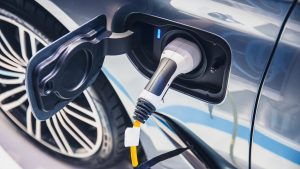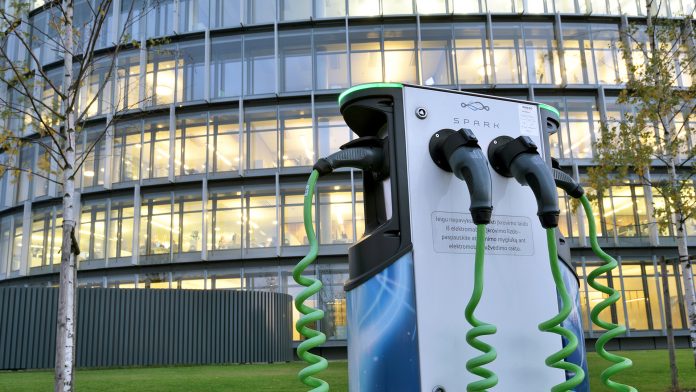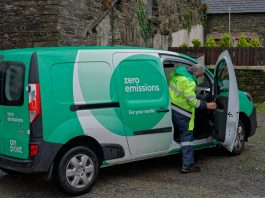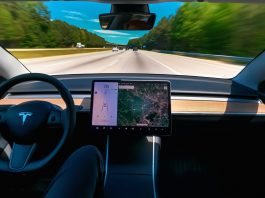Beth Burmahl, Argonne Associate at Argonne National Laboratory, outlines the role of the laboratory in increasing EV uptake.
Decarbonisation requires a large-scale transition to zero-emission electric vehicles (EVs). Sustainability is increasingly at the forefront of innovation, with the world recognising the need for alternative energy sources, battery development, and advanced technology to mitigate the effects of climate change. The US is well on the way towards an electric future. More than 1% of the vehicles on the road are electric, and 6% of the vehicles sold last year were hybrid or fully electric vehicles.
Widespread EV adoption is dependent on their ability to present a viable, competitive alternative to petrol and diesel vehicles. To do this, the limitations of EVs must be understood and resolved. By building batteries that can store more charge safely, accelerating charging, and modelling the impacts of EVs, the U.S. Department of Energy’s Argonne National Laboratory is part of the effort to provide these answers and pave the way for the next generation of vehicles.
EV uptake requires improved charging
Key to significant EV uptake is improving the speed and efficiency with which drivers can charge their vehicles. Currently, charging time can take anywhere from 30 minutes to overnight. Argonne researchers are currently part of the eXtreme Fast Charge Cell Evaluation of Lithium-Ion Batteries (XCEL) initiative, which aims at reducing the charging time to 15 minutes or less.
To better understand the limitations associated with the lithium-ion batteries that power electric vehicles, scientists are exploring a variety of different cell designs. At Argonne, these battery cells undergo rigorous testing and characterisation both during the testing cycle and afterwards. Research in XCEL has already demonstrated a 50% increase in the energy density – equivalent to the driving range held by a battery – that is possible with fast charging.
This transition to EVs requires the appropriate infrastructure to be in place. By 2030, the US Government hopes to roll out more than half a million public EV chargers across the country. The National Electric Vehicle Infrastructure Formula Program, supported by Argonne, will distribute $5bn to states to create the massive infrastructure.
Creating equal access to EV charging
Seeking equal access to electric vehicle charging for all US residents, Argonne developed the interactive Electric Vehicle Charging Justice Map to help states align their efforts with the federal goal to allocate 40% of federal benefits, including funding for clean transportation, to underserved communities.

To encourage EV uptake, governments and the general public alike must be convinced of their economic benefits. The JOBS EVSE 2.0 tool developed by Argonne helps assess the economic benefits related to installing charging stations. Users can use the tool to calculate the economic impacts associated with development and operation of charging stations, including new jobs.
Taking advantage of innovative technology
Transitioning to a greener, more sustainable society requires us to take advantage of innovative technology. Artificial Intelligence (AI) and advanced quantum computers are now a reality that can, and should, be utilised to improve energy efficiency and mitigate environmental impacts. Connected and automated vehicles (CAVs) are already beginning to roll off the assembly line, and fully driverless cars may be soon to hit the road.
Using Argonne’s RoadRunner tool, researchers can create road environments that effectively ‘talk’ to particular CAVs, informing them when another car or hazard is ahead. Using RoadRunner, the Argonne team has developed algorithms that can reduce fuel consumption by CAVs by 15-22%.
New technology is being deployed daily to reduce EV prices and help cut greenhouse gas emissions. It is difficult to accurately assess the true costs and environmental impacts of these vehicles, taking into consideration the entire EV lifecycle – from materials and production, through to use and recycling. This information is essential for completing a successful, comprehensive shift to EVs.
Environmental benefits of EVs
Argonne is a global leader in lifecycle analyses of vehicles, thanks to the laboratory’s Greenhouse gases, Regulated Emissions and Energy use in Technologies (GREET) model. GREET has been employed to quantify greenhouse gas emissions from both the fuel and production life cycles of EVs. Using this model, Argonne is able to analyse the environmental trade-offs in owning an EV versus a conventional vehicle.
A pair of reports issued in 2022 revealed that EVs may soon become less expensive to own and operate than traditional gas-powered vehicles, while cutting greenhouse gas emissions by more than half. Research and innovation are proving successful, and with continued commitment to the EV supply chain, large-scale transition may not be so far away.
Please note, this article will also appear in the sixteenth edition of our quarterly publication.









